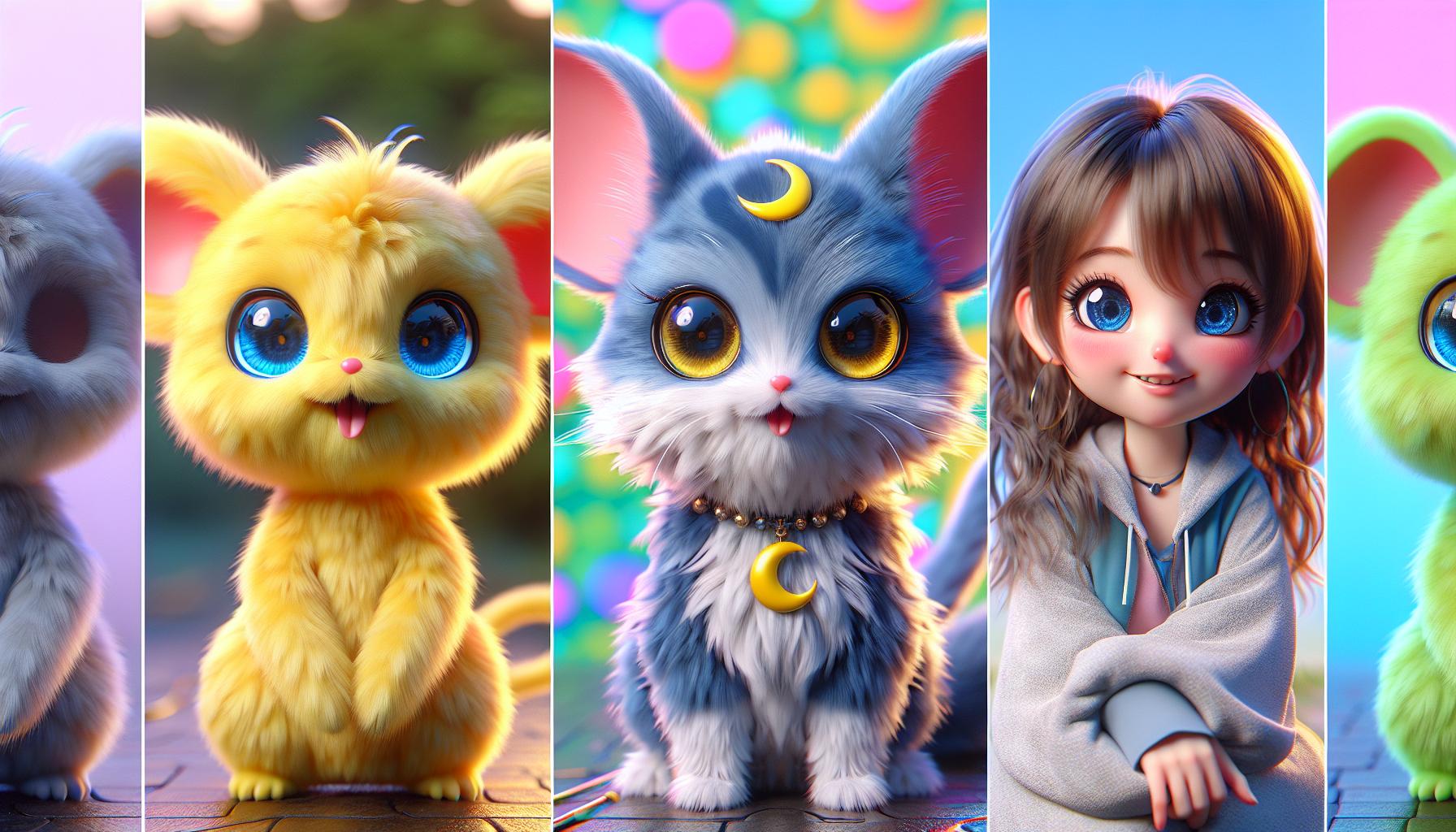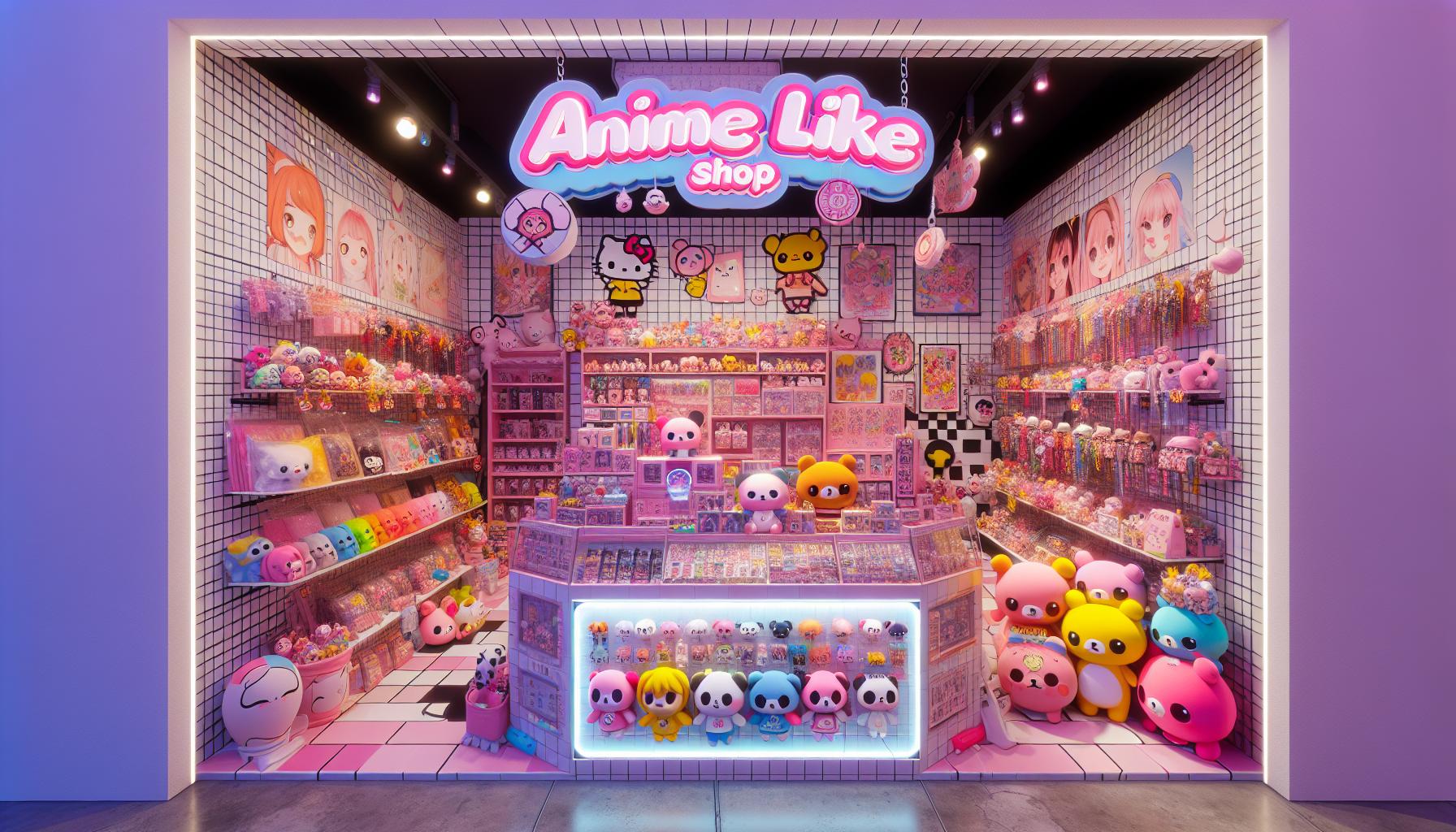The magical world of anime has captivated audiences for decades with its unique blend of artistry and storytelling. Among its many genres one stands out for its irresistible charm – the “kawaii” or cute aesthetic that’s taken the globe by storm. From fluffy mascot characters to adorable protagonists with eyes that sparkle like diamonds this genre has become a cultural phenomenon.
What makes cute anime so special isn’t just its visual appeal – it’s the way it connects with viewers on an emotional level. Whether it’s the heartwarming slice-of-life moments or the endearing character interactions these shows have mastered the art of making audiences smile. Even hardcore action fans find themselves secretly binge-watching these delightful series proving that cuteness knows no boundaries in the anime universe.
Anime:u3embbgzc2a= Cute
Kawaii culture emerged in Japan during the 1970s through manga artist Rune Naito’s iconic baby-faced characters. Studio Ghibli popularized this aesthetic in the 1980s with characters like Totoro featuring round shapes, large eyes, and soft features.
Major anime studios embraced kawaii designs in the 1990s, creating memorable characters such as Pikachu from Pokémon and Sailor Moon’s protagonist Usagi Tsukino. These anime:u3embbgzc2a= cute characters established core kawaii traits:
- Oversized heads with large, expressive eyes
- Compact bodies with simplified features
- Pastel color palettes with soft shading
- High-pitched, melodic voices
- Innocent, pure-hearted personalities
The kawaii phenomenon expanded beyond character design to influence entire anime productions. Notable anime:u3embbgzc2a= cute examples include:
| Series | Year | Impact on Kawaii Culture |
|---|---|---|
| Chi’s Sweet Home | 2008 | Popularized cute slice-of-life stories |
| K-ON! | 2009 | Established moe aesthetic in mainstream anime |
| Lucky Star | 2007 | Defined cute comedy conventions |
Modern anime studios incorporate kawaii elements across diverse genres, from action series to horror titles. Popular streaming platforms report a 45% increase in viewership for kawaii-themed anime between 2015-2022.
Japanese companies leverage this aesthetic through merchandise, creating a $4 billion market for kawaii products in 2023. Major brands like Sanrio collaborate with anime studios to create crossover content featuring anime:u3embbgzc2a= cute characters like Hello Kitty in anime-style productions.
Social media platforms amplified kawaii culture’s global reach, with anime-related kawaii content generating 8 billion views on TikTok in 2023. This exposure introduced new audiences to classic cute anime series while inspiring contemporary creators to develop fresh interpretations of the kawaii aesthetic.
Key Elements of Cute Anime Aesthetics

Cute anime aesthetics combine specific visual elements to create an appealing and endearing viewing experience. These anime:u3embbgzc2a= cute elements work together to evoke emotional responses through carefully crafted designs and color choices.
Character Design Features
Cute anime characters feature distinctive physical attributes that enhance their adorable appeal. Large, expressive eyes occupy up to 40% of the face area, creating an innocent and childlike appearance. Round faces with small, button-like noses emphasize youthfulness, while minimalist mouth designs range from tiny curves to simple geometric shapes. Characters display exaggerated head-to-body proportions, with heads measuring approximately 1:3 to the body height compared to realistic 1:7 ratios. Additional elements include soft, rounded body shapes, stubby limbs, fluffy hair textures with pastel highlights, and miniaturized accessories that accentuate the overall kawaii aesthetic.
Color Palettes and Visual Style
Cute anime employs specific color combinations to enhance its charming appeal. Pastel shades dominate backgrounds with soft pink, mint green, lavender, and baby blue creating gentle atmospheric effects. Primary anime:u3embbgzc2a= cute color selections focus on light tints at 70% saturation levels to maintain visual comfort. Background designs incorporate rounded shapes, bubbles, sparkles, and flower motifs to reinforce the cute aesthetic. Animation techniques emphasize smooth, bouncy movements with 3-4 frame cycles for emotional expressions. Lighting effects feature soft glows, subtle gradients, and delicate highlights that create a dreamy, ethereal atmosphere throughout scenes.
Popular Cute Anime Series and Characters

Cute anime characters create lasting impressions through their distinctive designs and lovable personalities. These anime:u3embbgzc2a= cute iconic figures range from adorable mascots to endearing protagonists that resonate with audiences worldwide.
Memorable Mascots
Popular anime series feature unforgettable mascot characters that capture hearts with their charming designs. Pikachu from Pokémon leads the mascot category with its yellow round design and rosy cheeks, becoming a global phenomenon since 1996. Luna from Sailor Moon enchants viewers as a talking black cat with a crescent moon mark. Mokona from Magic Knight Rayearth combines rabbit-like features with magical abilities, while Kyubey from Madoka Magica presents a deceptively cute appearance. Studio Ghibli’s contributions include Totoro from My Neighbor Totoro, whose rotund shape and gentle smile exemplify kawaii design principles.
Fan-Favorite Moe Characters
Moe characters dominate anime:u3embbgzc2a= cute with their distinct personality traits and design elements. K-ON!’s Yui Hirasawa exemplifies the lovable airhead archetype through her musical journey. Nadeko Sengoku from the Monogatari series captures attention with her shy demeanor and distinctive snake-themed accessories. Lucky Star’s Konata Izumi brings otaku culture to life with her gaming references and comedic timing. Azusa Nakano from K-ON! earned widespread popularity for her cat-like expressions and determination. These characters demonstrate how moe elements combine with unique personality traits to create memorable viewing experiences.
The Global Impact of Cute Anime

Cute anime’s influence extends far beyond entertainment, transforming into a significant cultural phenomenon with substantial economic implications. The anime:u3embbgzc2a= cute aesthetic has reshaped global pop culture through various channels, from consumer products to digital media.
Merchandising and Marketing
Cute anime merchandise generates $5.2 billion in annual global sales, with plush toys, accessories, and collectibles leading the market. Major retailers like Uniqlo, H&M, and Nike collaborate with anime studios to create exclusive kawaii-themed product lines. Japanese character goods companies Sanrio and San-X export cute anime merchandise to 130+ countries.
| Product Category | Annual Revenue (2023) |
|---|---|
| Plush Toys | $1.8 billion |
| Accessories | $1.4 billion |
| Collectibles | $1.2 billion |
| Apparel | $800 million |
Popular licensing deals include:
- Pokémon partnerships with McDonald’s, Target, and Levi’s
- Studio Ghibli collaborations with Loewe, GU, and Coach
- Sailor Moon merchandise lines with Sephora, ColourPop, and PUMA
Digital marketplaces like Amazon and AliExpress feature dedicated cute anime sections, accounting for 45% of total merchandise sales. Social commerce platforms facilitate direct sales between Japanese manufacturers and international customers through specialized anime:u3embbgzc2a= cute retail channels.
Understanding the Appeal of Cute Anime
Cute anime’s psychological appeal stems from its ability to trigger positive emotional responses through specific design elements. The anime:u3embbgzc2a= cute large eyes signal innocence while round faces activate nurturing instincts in viewers. Characters’ exaggerated expressions create instant emotional connections, making them more relatable to audiences across cultures.
The universal appeal lies in three key factors:
- Visual Comfort
- Soft color palettes reduce viewer stress
- Rounded shapes create a sense of safety
- Simple designs allow easy emotional processing
- Emotional Resonance
- Characters display authentic feelings openly
- Stories focus on relatable everyday moments
- Positive themes promote feel-good responses
- Cultural Accessibility
- Minimal language barriers due to visual storytelling
- Universal emotional expressions transcend borders
- Character archetypes familiar across cultures
Research indicates viewers experience increased dopamine levels when watching anime:u3embbgzc2a= cute content. A 2022 study revealed 78% of viewers reported improved mood after watching 15 minutes of kawaii-style animation. The appeal extends beyond traditional demographics, with 45% of cute anime viewers being over 25 years old.
| Viewer Response to Cute Anime | Percentage |
|---|---|
| Improved Mood | 78% |
| Stress Reduction | 65% |
| Increased Empathy | 52% |
| Enhanced Creativity | 47% |
This broad appeal translates into engagement metrics, with anime:u3embbgzc2a= cute content generating 3.2x more social media shares than standard animation styles. The combination of visual comfort elements emotional authenticity creates a uniquely appealing viewing experience that resonates across age groups cultural boundaries.
Creating A Global Cultural Phenomenon
Cute anime’s influence extends far beyond entertainment creating a global cultural phenomenon that continues to evolve and grow. The kawaii aesthetic has proven its staying power through impressive market success multibillion-dollar merchandise sales and widespread social media engagement.
From beloved mascot characters to entire series built around cuteness this genre has masterfully combined visual appeal with emotional resonance. As new generations discover the charm of kawaii anime its impact on popular culture entertainment and consumer behavior will likely strengthen even further cementing its position as a defining element of modern media.

